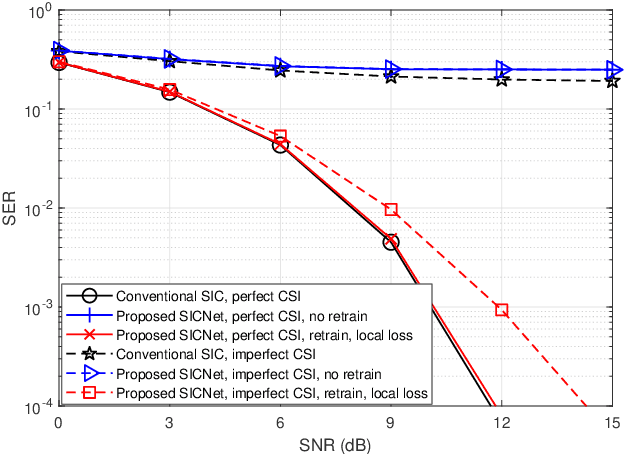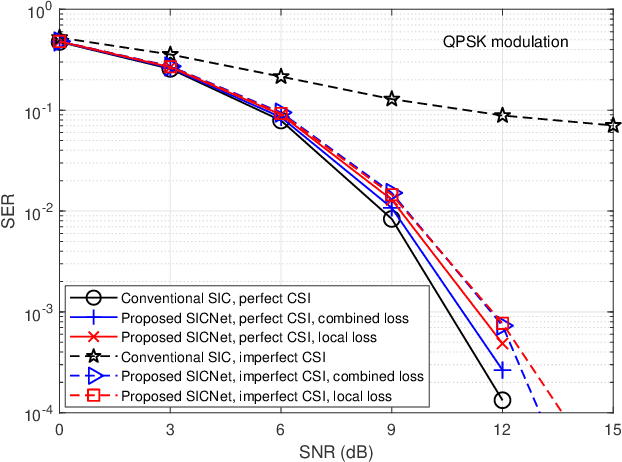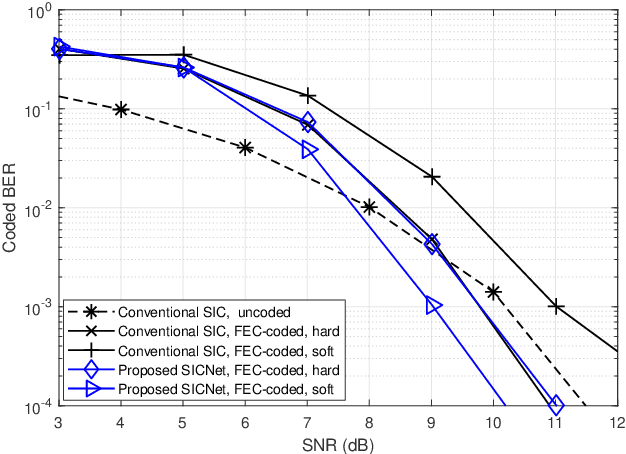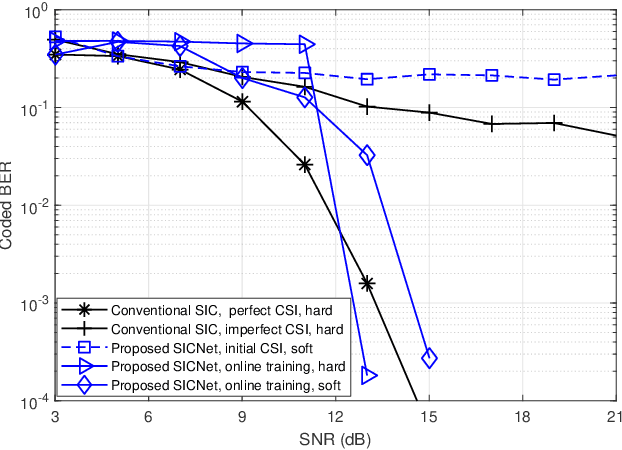Deep Learning Based Successive Interference Cancellation for the Non-Orthogonal Downlink
Paper and Code
Jul 29, 2022



Non-orthogonal communications are expected to play a key role in future wireless systems. In downlink transmissions, the data symbols are broadcast from a base station to different users, which are superimposed with different power to facilitate high-integrity detection using successive interference cancellation (SIC). However, SIC requires accurate knowledge of both the channel model and channel state information (CSI), which may be difficult to acquire. We propose a deep learningaided SIC detector termed SICNet, which replaces the interference cancellation blocks of SIC by deep neural networks (DNNs). Explicitly, SICNet jointly trains its internal DNN-aided blocks for inferring the soft information representing the interfering symbols in a data-driven fashion, rather than using hard-decision decoders as in classical SIC. As a result, SICNet reliably detects the superimposed symbols in the downlink of non-orthogonal systems without requiring any prior knowledge of the channel model, while being less sensitive to CSI uncertainty than its model-based counterpart. SICNet is also robust to changes in the number of users and to their power allocation. Furthermore, SICNet learns to produce accurate soft outputs, which facilitates improved soft-input error correction decoding compared to model-based SIC. Finally, we propose an online training method for SICNet under block fading, which exploits the channel decoding for accurately recovering online data labels for retraining, hence, allowing it to smoothly track the fading envelope without requiring dedicated pilots. Our numerical results show that SICNet approaches the performance of classical SIC under perfect CSI, while outperforming it under realistic CSI uncertainty.
 Add to Chrome
Add to Chrome Add to Firefox
Add to Firefox Add to Edge
Add to Edge